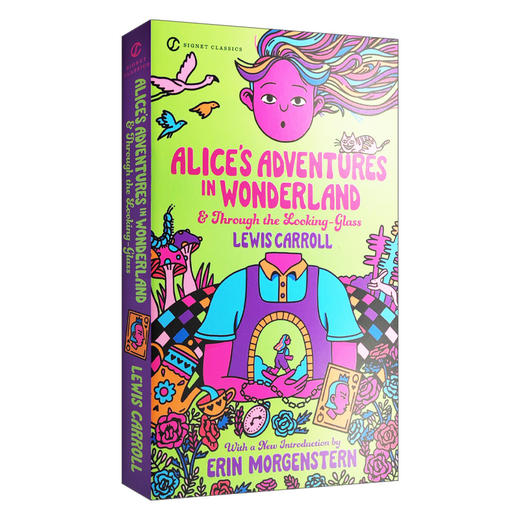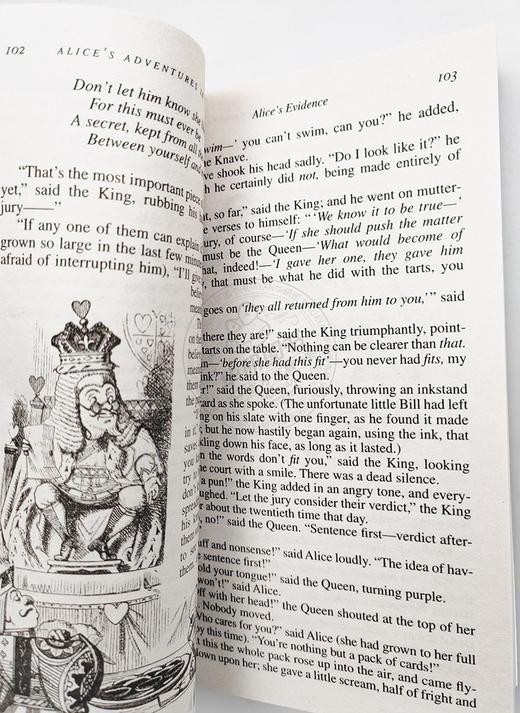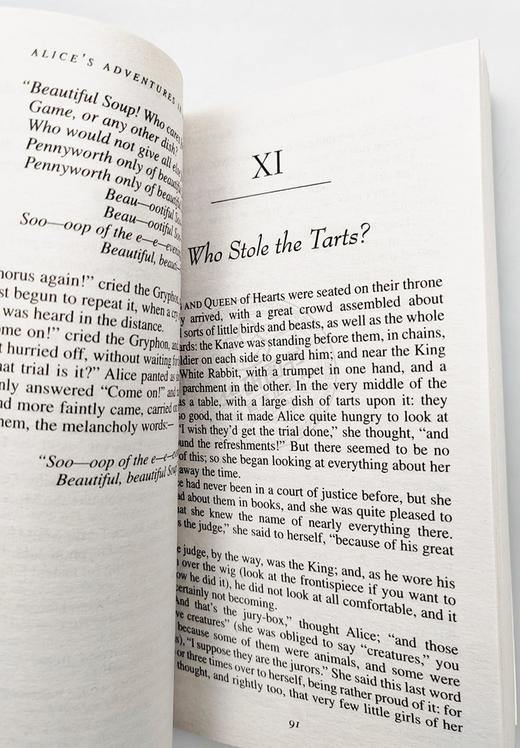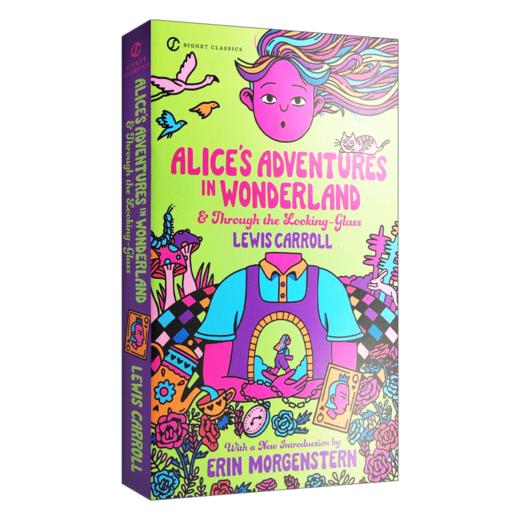爱丽丝梦游仙境 英文原版小说Alice's Adventures in Wonderland 爱丽丝漫游奇境记进英语原版书籍搭爱丽丝梦游仙境与镜中奇遇记【经典文学读物】
| 运费: | ¥ 0.00-999.00 |
| 库存: | 84 件 |
商品详情
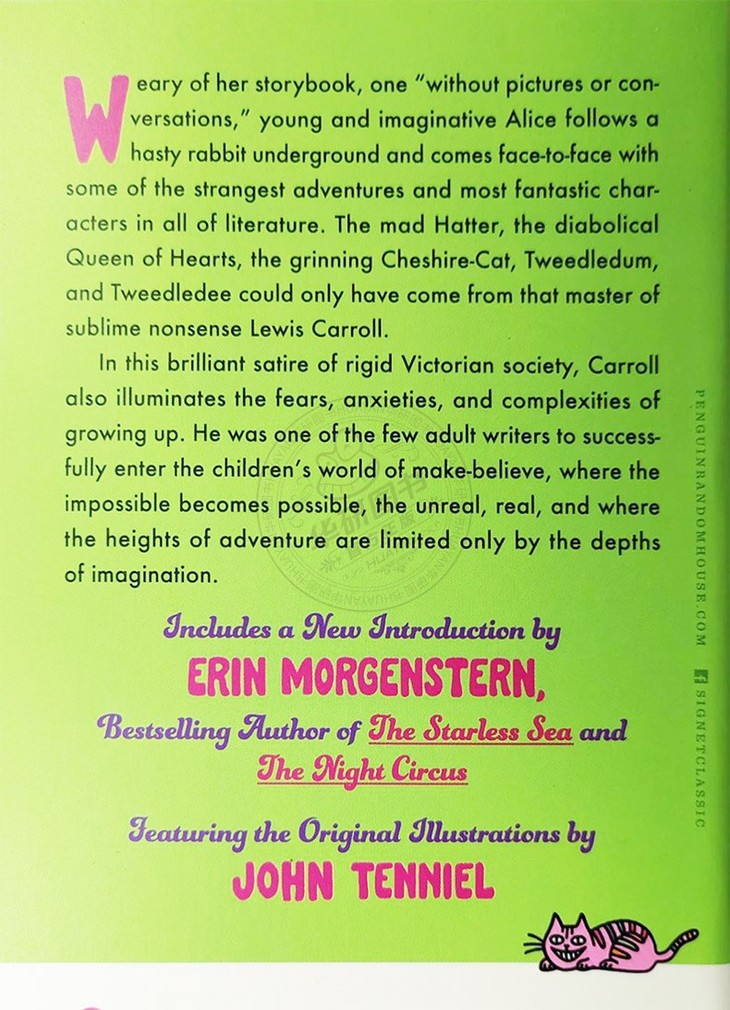
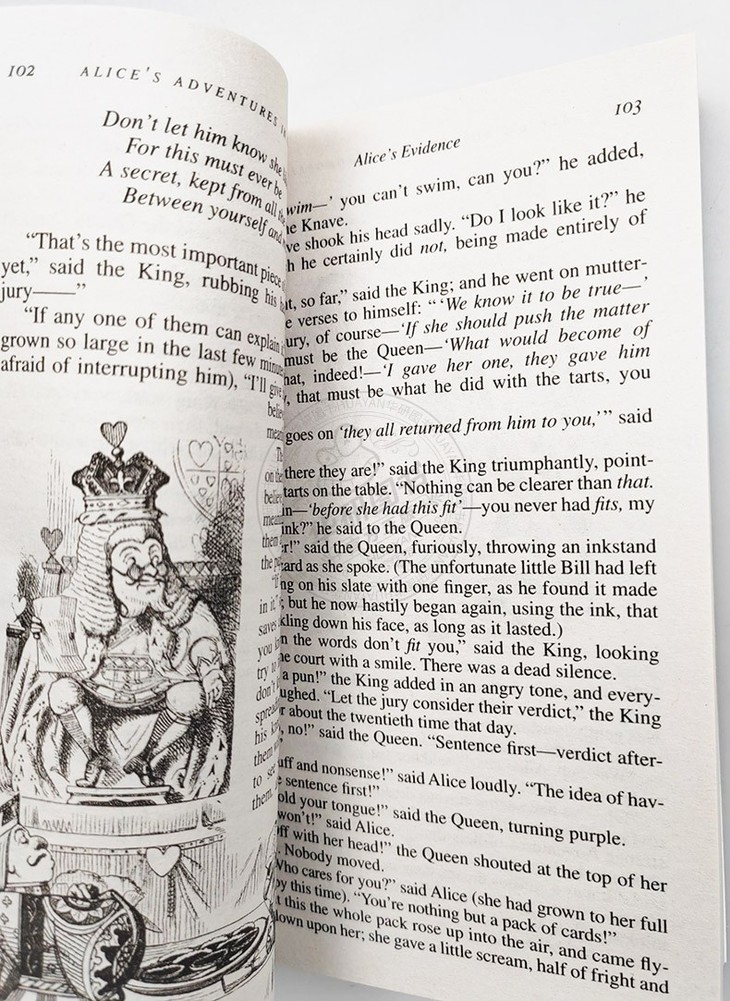
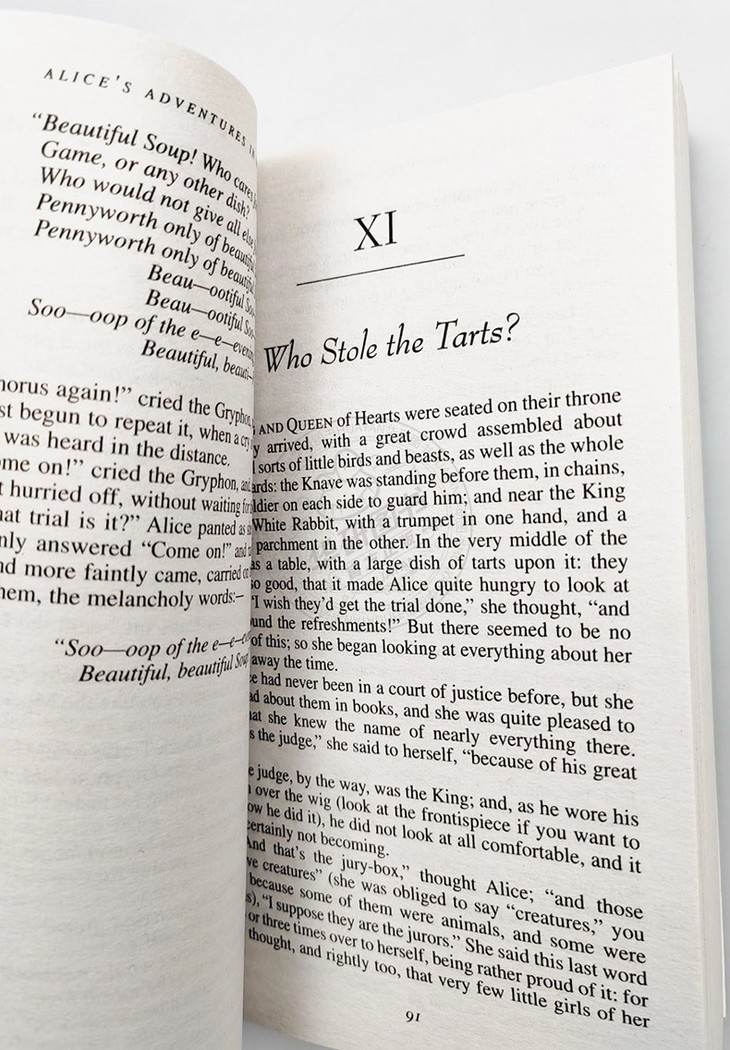
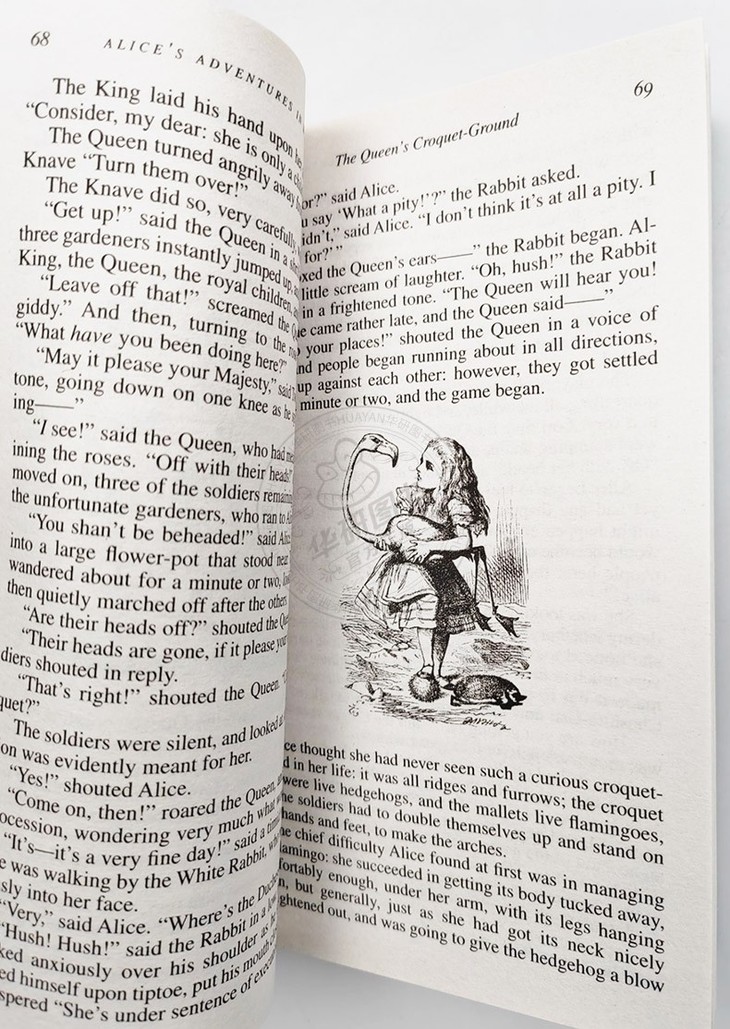
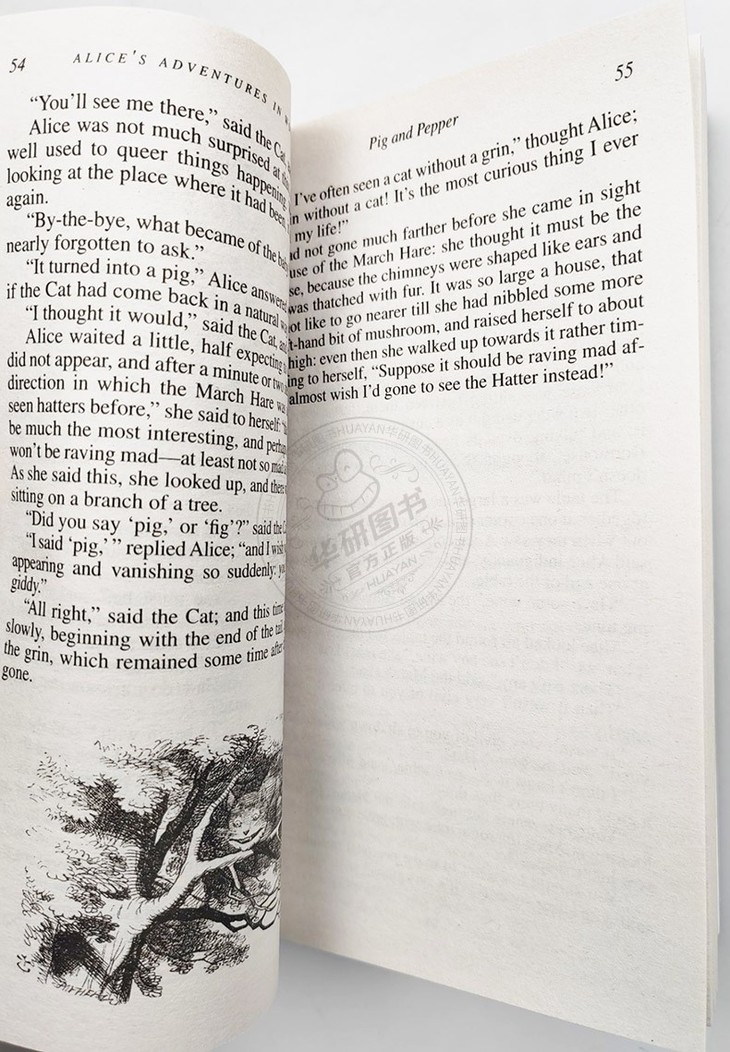

书名:Alice's Adventures in Wonderland and Through the Looking Glass 爱丽丝梦游仙境与镜中奇遇记
难度:Lexile蓝思阅读指数890L
作者:Lewis Carroll刘易斯·卡罗尔
出版社名称:Signet Classics
出版时间:2012
语种:英文
ISBN:9780451532008
商品尺寸:10.6 x1.7 x 17.3 cm
包装:简装
页数:256 (以实物为准)

Alice’s Adventures in Wonderland《爱丽丝梦游仙境》自1865年出版以来,一直深受不同年纪的读者爱戴。现已被翻译成一百多种语言在世界各地发行,其衍生的电影、电视、漫画等作品也不计其数。主人公爱丽丝的那份纯真无论是对儿童还是成年人,都具有非常大的魅力。书中充满了英国式的幽默、笔调轻松、用词简洁,运用了很多的双关语,适合有基础英文水平的儿童文学爱好者作为入门读物。
本书为Signet Classics推出的英文原版,包含Alice’s Adventures in Wonderland《爱丽丝梦游仙境》和Alice’s Adventures Through the Looking Glass《爱丽丝镜中奇遇记》两个故事,由Martin Gardner作序,Jeffrey Meyers后记,附John Tenniel所绘插图,内容完整无删减,书本小巧便携。
Young and imaginative Alice follows a hasty rabbit underground and comes face-to-face with some of the strangest adventures and most fantastic characters in all literature.
The mad Hatter, the diabolical Queen of Hearts, the grinning Cheshire-Cat, Tweedledum, and Tweedledee could only have come from that master of sublime nonsense Lewis Carroll. In this brilliant satire of rigid Victorian society, Carroll also illuminates the fears, anxieties, and complexities of growing up. He was one of the few adult writers to enter successfully the children’s world of make-believe, where the impossible becomes possible, the unreal, real, and where the heights of adventure are limited only by the depths of imagination.
With an Introduction by Martin Gardner and an Afterword by Jeffrey Meyers
and the Original Illustrations by John Tenniel
Review
“A work of glorious intelligence and literary devices…Nonsense becomes a form of higher sense” —Malcolm Bradbury
“Alice in Wonderland is one of the top 25 books of all time. I always loved the book and I always loved the various characters, the psychedelic nature of it and kind-of odd allegorical stories inside stories. I always thought it was beautiful.” —Jonny Depp
“Wonderland and the world through the Looking Glass were, I always knew, different from other imagined worlds. Nothing could be changed, although things in the story were always changing… Carroll moves his readers as he moves chess pieces and playing cards.”—A. S. Byatt
“It would not have occurred to me even to suspect that the “children’s tale” was in brilliant ways coded to be read by adults and was in fact an English classic, a universally acclaimed intellectual tour de force and what might be described as a psychological/anthropological dissection of Victorian England. It seems not to have occurred to me that the child-Alice of drawing rooms, servants, tea and crumpets and chess, was of a distinctly different background than my own. I must have been the ideal reader: credulous, unjudging, eager, thrilled. I knew only that I believed in Alice, absolutely.” —Joyce Carol Oates

小姑娘爱丽丝追赶一只揣着怀表、会说话的白兔,掉进了一个兔子洞,由此坠入了神奇的地下世界。在这个世界里,喝一口水就能缩得如同老鼠大小,吃一块蛋糕又会变成巨人,同一块蘑菇吃右边就变矮,吃其左边则又长高,狗发脾气时便咆哮和摇尾巴,而猫咆哮和摇尾巴却是因为高兴。在这个世界里,似乎所有吃的东西都有古怪……
Alice’s Adventures in Wonderlandis an 1865 novel written by English author Charles Lutwidge Dodgson under the pseudonym Lewis Carroll. It tells of a girl named Alice falling through a rabbit hole into a fantasy world populated by peculiar, anthropomorphic creatures. The tale plays with logic, giving the story lasting popularity with adults as well as with children. It is considered to be one of the best examples of the literary nonsense genre. Its narrative course and structure, characters and imagery have been enormously influential in both popular culture and literature, especially in the fantasy genre.

I. Down the Rabbit-Hole
II. The Pool of Tears
III. A Caucus-Race and a Long Tale
IV. The Rabbit Sends in a Little Bill
V. Advice from a Caterpillar
VI. Pig and Pepper
VII. A Mad Tea-Party
VIII. The Queen’s Croquet-Ground
IX. The Mock Turtle’s Story
X. The Lobster-Quadrille
XI. Who Stole the Tarts?
XII. Alice’s Evidence

Lewis Carroll刘易斯·卡罗尔(1832-1898),原名查尔斯·路特维奇·道奇森(Charles Lutwidge Dodgson),英国数学家、逻辑学家、童话作家、摄影师,曾是牛津大学的数学教师。其创作的童话《爱丽丝梦游仙境》和《爱丽丝镜中奇遇记》为人们熟知,其他代表作有TheHunting of the Snark《猎鲨记》、Jabberwocky《无聊的话》以及Sylvie and Bruno《色尔维和布鲁诺》。
Lewis Carroll(1832-1898), the pen name of Oxford mathematician, logician, photographer and author Charles Lutwidge Dodgson, is famous the world over for his fantastic classics “Alice’s Adventures in Wonderland,” “Through the Looking Glass,” “The Hunting of the Snark,” “Jabberwocky,” and “Sylvie and Bruno.”
Chapter 1 Down the Rabbit-Hole
Chapter 2 The Pool of Tears
Chapter 3 A Caucus-Race and Long Tale
Chapter 4 The Rabbit Sends in a Little Bill
Chapter 5 Advice from a Caterpillar
Chapter 6 Pig and Pepper
Chapter 7 A Mad Tea-Party
Chapter 8 The Queen’s Croquet-Ground
Chapter 9 The Mock Turtle’s Story
Chapter 10 The Lobster Quadrille
Chapter 11 Who Stole the Tarts?
Chapter 12 Alice’s Evidence
Lewis Carroll刘易斯·卡罗尔(1832-1898),原名查尔斯·路特维奇·道奇森(Charles Lutwidge Dodgson),英国知名数学家、逻辑学家、童话作家、摄影师,曾是牛津大学的数学教师。其创作的童话《爱丽丝梦游仙境》和《爱丽丝镜中奇遇记》为人们熟知,其他代表作有The Hunting of the Snark《猎鲨记》、Jabberwocky《无聊的话》以及Sylvie and Bruno《色尔维和布鲁诺》。
Charles Lutwidge Dodgson (Lewis Carroll) (1832–98) attended Rugby School for four years and matriculated at Christ Church, Oxford, in May 1850. In 1855, he was appointed mathematical lecturer at Christ Church, a position he held until 1881. Late in the year 1865, he published, under the pseudonym Lewis Carroll, Alice’s Adventures in Wonderland—the Alice of the title being patterned after a daughter of Dean Liddell of the college. In 1869 came Phantasmagoria, in 1871 Through the Looking-Glass, in 1876 The Hunting of the Snark, and in 1883 Rhyme and Reason. During the years in which Lewis Carroll was delighting children of all ages, C. L. Dodgson was publishing mathematical works, the most famous of these being Euclid and His Modern Rivals (1879). Though his authorship of the Alice books was well-known, he shied away from publicity, stating, “Mr. Dodgson neither claimed nor acknowledged any connection with the books not published under his name.”
Martin Gardner (1914–2010) was a science writer who for twenty-five years wrote the “Mathematical Games” column in Scientific American. He authored some seventy books about mathematics, science, philosophy, and literature, including two novels and a collection of short stories. His Annotated Alice and More Annotated Alice were combined into a single Annotated Alice. He also wrote The Annotated Snark and edited The Universe in a Handkerchief, a collection of Carroll’s writings about recreational mathematics, puzzles, ciphers, word play, and games.
Jeffrey Meyers, a fellow of the Royal Society of Literature, is the author of numerous biographies including Samuel Johnson: The Struggle; The Genius and The Goddess: Arthur Miller and Marilyn Monroe; George Orwell: Life and Art—his fifth work on Orwell; and John Huston: Courage and Art. Thirty of his books have been translated into fourteen languages and published on six continents.

Chapter IV: The Rabbit Sends in a Little Bill
It was the White Rabbit, trotting slowly back again, and looking anxiously about as it went, as if it had lost something; and she heard it muttering to itself, “The Duchess! The Duchess! Oh my dear paws! Oh my fur and whiskers! She’ll get me executed, as sure as ferrets are ferrets! Where can I have dropped them, I wonder?” Alice guessed in a
moment that it was looking for the fan and the pair of white kidgloves, and she very good-naturedly began hunting about for them, but they were nowhere to be seen—everything seemed to have changed since her swim in the pool; and the great hall, with the glass table and the little door, had vanished completely.
Very soon the Rabbit noticed Alice, as she went hunting about, and called out to her, in an angry tone, “Why, Mary Ann, what are you doing out here? Run home this moment, and fetch me a pair of gloves and a fan! Quick, now!” And Alice was so much frightened that she ran o at once in the direction it pointed to, without trying to explain the mistake that it had made.
“He took me for his housemaid,” she said to herself as she ran. “How surprised he’ll be when he finds out who I am! But I’d better take him his fan and gloves—that is, if I can find them.” As she said this, she came upon a neat little house, on the door of which was a bright brass plate with the name “W. RABBIT ” engraved upon it. She went in without knocking, and hurried upstairs, in great fear lest she should meet the real Mary Ann, and be turned out of the house before she had found the fan and gloves.
“How queer it seems,” Alice said to herself, “to be going messages for a rabbit! I suppose Dinah’ll be sending me on messages next!” And she began fancying the sort of thing that would happen: “‘Miss Alice! Come here directly, and get ready for your walk!’ ‘Coming in a minute,’ nurse! But I’ve got to watch this mouse-hole till Dinah comes back, and see that the mouse doesn’t get out.’ Only I don’t think,” Alice went on, “that they’d let Dinah stop in the house if it began ordering people about like that!”
By this time she had found her way into a tidy little room with a table in the window, and on it (as she had hoped) a fan and two or three pairs of tiny white kid-gloves: she took up the fan and a pair of the gloves, and was just going to leave the room, when her eye fell upon a little bottle that stood near the looking-glass. There was no label this time with the words “DRINK ME,” but nevertheless she uncorked it and put it to her lips. “I know something interesting is sure to happen,” she said to herself, “whenever I eat or drink anything: so I’ll just see what this bottle does. I do hope it’ll make me grow large again, for really I’m quite tired of being such a tiny little thing!”
It did so indeed, and much sooner than she had expected: before she had drunk half the bottle, she found her head pressing against the ceiling, and had to stoop to save her neck from being broken. She hastily put down the bottle, saying to herself “That’s quite enough—I hope I sha’n’t grow any more—As it is, I ca’n’t get out at the door—I do wish I hadn’t drunk quite so much!”
Alas! It was too late to wish that! She went on growing, and growing, and very soon had to kneel down on the floor: in another minute there was not even room for this, and she tried the effect of lying down with one elbow against the door, and the other arm curled round her head. Still she went on growing, and, as a last resource, she put one arm out of the window, and one foot up the chimney, and said to herself “Now I can do no more, whatever happens. What will become of me?”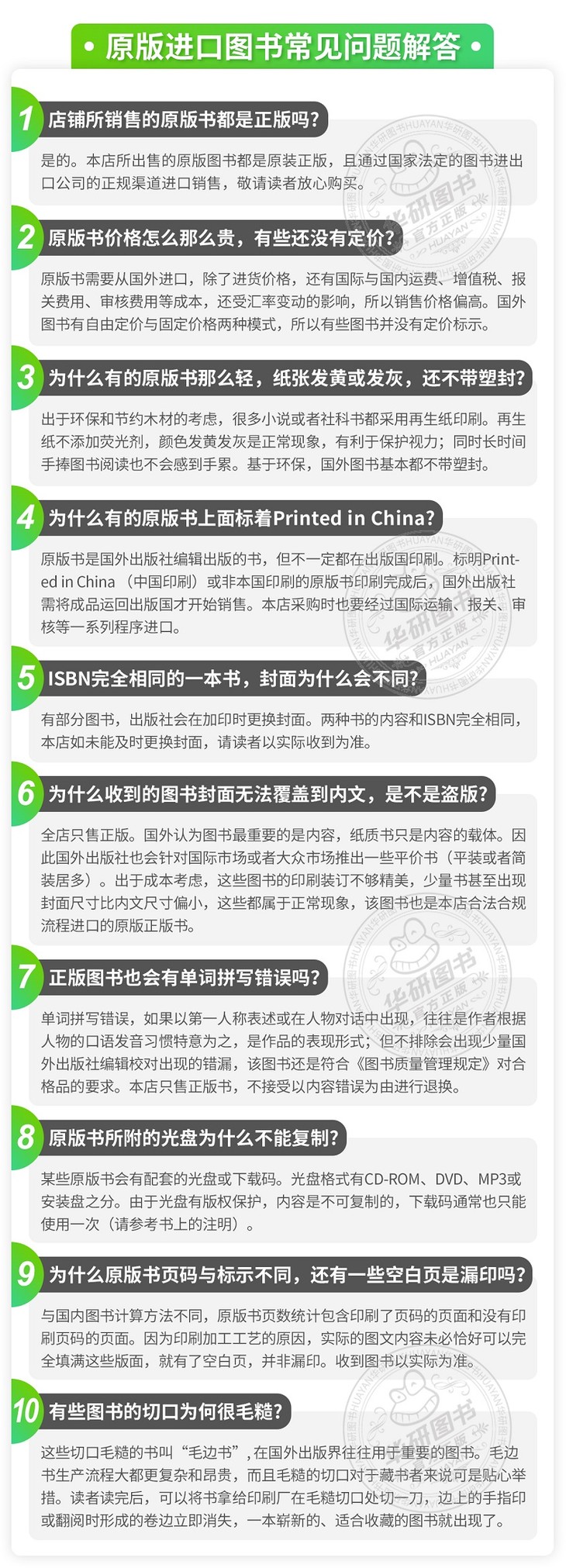
- 华研外语 (微信公众号认证)
- 本店是“华研外语”品牌商自营店,全国所有“华研外语”、“华研教育”品牌图书都是我司出版发行的,本店为华研官方源头出货,所有图书均为正规正版,拥有实惠与正版的保障!!!
- 扫描二维码,访问我们的微信店铺
- 随时随地的购物、客服咨询、查询订单和物流...
